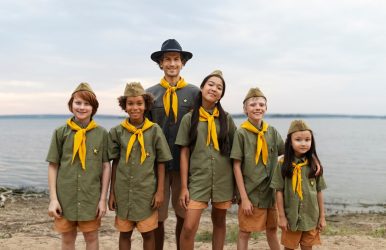Nurturing Young Explorers: The Benefits Of Beach Camps In Nurturing Curiosity And Resilience
BY Abdul Aziz Feb 15, 2024
In today's fast-paced world, where screens often dominate leisure time, the importance of outdoor activities, especially for children, cannot be overstated. Among these, beach camps stand out as not just a retreat into nature but as powerful platforms for fostering essential life skills in young minds. Through fun, education, and adventure, beach camps offer a unique environment where children can develop curiosity, resilience, teamwork, and much more. This article delves into the transformative power of beach camps, focusing on vibrant coastal communities like Manhattan Beach, and provides insights into selecting the perfect camp that aligns with a child's interests and parents' expectations. The Crucial Role of Beach Camps in Child Development Beach camps provide a dynamic environment for children to explore, learn, and grow. The natural setting of the beach, with its vast expanse of sand and water, presents endless opportunities for discovery and adventure. These camps are about much more than just building sandcastles or swimming; they are designed to immerse children in various activities that promote essential life skills. 1. Curiosity and Exploration Beach camps stimulate curiosity in children by exposing them to the wonders of the marine ecosystem. Guided exploration sessions allow children to learn about different species of marine life, the importance of conservation, and the ecological balance of beach environments. This hands-on learning approach fosters a sense of wonder and encourages children to ask questions and seek answers. 2. Resilience and Adaptability The unpredictability of nature and the challenges of outdoor activities help children develop resilience. Whether learning to surf, participating in beach clean-ups, or navigating obstacle courses, children learn to face challenges head-on, adapt to changing conditions, and overcome obstacles. These experiences teach them perseverance and resilience, qualities that are invaluable throughout life. 3. Teamwork and Social Skills Beach camps are communal experiences where children interact with peers from diverse backgrounds. Children learn the importance of cooperation, communication, and mutual respect through team-based activities and games. These social interactions are crucial for developing empathy and social skills, helping children learn how to work effectively in teams, and building lasting friendships. The Variety of Beach Camps in Coastal Communities Coastal communities, particularly Manhattan Beach, are renowned for their vibrant beach camp offerings. These camps cater to various interests and age groups, from surfing and marine biology to beach volleyball and environmental conservation. The diversity of camps ensures that there is something for every young explorer eager to embark on a seaside adventure. A. Surfing Camps These camps focus on teaching children the fundamentals of surfing, ocean safety, and wave etiquette. In addition to improving their surfing skills, children learn about the ocean's dynamics and the importance of respecting marine life. B. Environmental Conservation Camps These camps are designed to instill a sense of environmental stewardship in children. Activities include beach clean-ups, recycling and sustainability lessons, and interactive marine conservation sessions. C. Adventure and Exploration Camps Aimed at fostering a spirit of adventure, you can expect these camps to offer activities like treasure hunts, obstacle courses, and nature walks. They are designed to encourage exploration and discovery, helping children develop a love for the outdoors. The Role of Parents in Enhancing the Beach Camp Experience Parents play a crucial role in maximizing the benefits of a summer beach camp for their children. Before the camp begins, parents can engage their children in preparing for the experience, discussing what to expect, and setting personal goals. Stay connected through letters or emails during the camp can provide encouragement and support. After the camp, parents should take the time to reflect with their children on their experiences, discussing what they learned and how they've grown. This reflection reinforces the lessons learned at camp and integrates them into the child's development. ⛺Choosing the Right Beach Camp Selecting the right beach camp is a pivotal decision that can significantly impact a child's summer experience. It's about balancing fun and educational value, ensuring safety, and aligning with family values and expectations. Here are detailed strategies to guide parents through this process: 1. Identify Your Child's Interests The first step in choosing the right beach camp is understanding what your child is passionate about. The range of activities at beach camps is vast, from water sports like surfing and sailing to environmental education and beach volleyball. Sit down with your child and discuss what aspects of the beach and the outdoors excite them the most. This conversation can reveal whether they're more inclined towards adventure, science, conservation, or simply enjoying the beach environment. Knowing your child's interests will help narrow the options to camps specializing in areas they're eager to explore. 2. Research Camp Credentials Once you have a clearer idea of what you're looking for, it's essential to research the credentials of the camps that have caught your interest. Safety is paramount, so look for accredited camps accredited by reputable organizations such as the American Camp Association (ACA). These accreditations mean the camp adheres to strict safety and operational standards. Additionally, investigate the qualifications of the staff and instructors. Experienced, certified professionals passionate about their work can make a significant difference in the quality of the camp experience. Also, check the camp's history and reputation for insight into its track record and reliability. 3. Consider the Camp's Philosophy Every camp has its unique philosophy and approach to education, recreation, and interaction. This ethos influences the camp's atmosphere, the activities offered, and how they are conducted. For instance, some camps might focus on competitive sports, while others prioritize environmental conservation or cultural enrichment. Choosing a camp with values that resonate with your family is essential. A camp promoting skill development, personal growth, environmental stewardship, and respect for others can offer your child a more holistic and rewarding experience. Review the camp's mission statement, talk to the staff, and read testimonials from other parents and campers to gain insights into its philosophy and how it's reflected in its programs and daily operations. Conclusion The process of selecting the right beach camp is both exciting and daunting. By focusing on your child's interests, researching potential camps' credentials and safety standards, and aligning with a camp's philosophy that matches your family's values, you can ensure a fulfilling and enjoyable summer experience for your child. Remember, the goal is to find a camp where your child can thrive, learn new skills, and make lasting memories in a safe and supportive environment. Read Also: From Beaches To Mountains: Ideal Routes For Car Travel In Dubai The Perfect Getaway: Discovering The Closest Beach To Disney World! Some Of The Best Things To Do In Navarre Beach, Florida












